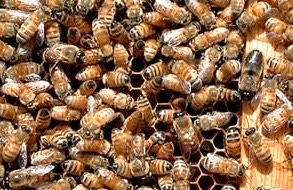
Bee populations decimated by tiny parasite
The mysterious disappearances of honey bees began in the fall of 2006 in Florida and spread. Beekeepers found their colonies suddenly empty, except for the queen and a few workers, with no traces of dead bees. In the years since it was named, colony collapse disorder (CCD) has continued to devastate the insects crucial to pollinating crops in North America.
March 18, 2011

From Fox News:
The mysterious disappearances of honey bees began in the fall of 2006 in Florida and spread. Beekeepers found their colonies suddenly empty, except for the queen and a few workers, with no traces of dead bees. In the years since it was named, colony collapse disorder (CCD) has continued to devastate the insects crucial to pollinating crops in North America.
Jerry Bromenshenk, a research professor at the University of Montana, and colleagues have linked vanishing colonies in North America with a virus-fungal tag team. The virus is insect iridescent virus, named for the effect it creates in infected tissues, and the fungi is Nosema ceranae, a microsporidian. In a study published in October 2010 in the journal PLoS ONE, the team described finding this combo in bees from failing colonies, and by testing both pathogens in bees, they found that together, they were more lethal than if they infected bees separately.
For more, see: The Tiny Parasite That's Decimating Bee Populations
You May Also Like



